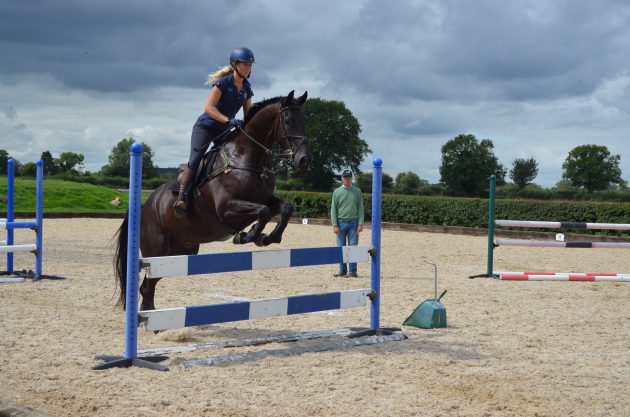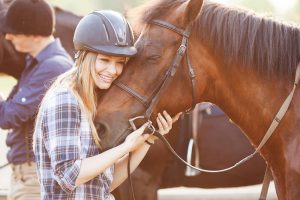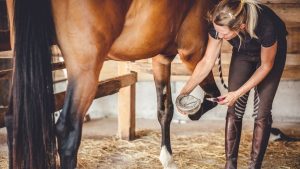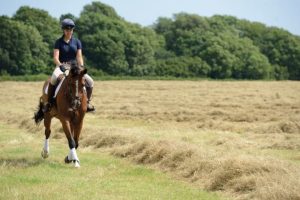Jumping is more than just an equestrian sport; it is a partnership between horse and rider, based on trust, training and skill. Effective jump training is more than just exercises; it requires a whole-individual approach to build agility, strength and confidence. This more in-depth guide delves into how to improve your horse’s jumping skills so that both horse and rider can overcome obstacles with grace and accuracy.
1. Tailoring Training to Your Horse’s Unique Physique:
It is important to know the physical condition of your horse. Each horse has its own strengths and weaknesses, depending on breed, age and health. A personalized training plan developed with the help of a veterinary expert can prevent injuries and help horses reach their full potential. By focusing on your horse’s verbal and nonverbal cues, you can vary the intensity and method of training to keep your horse interested and prevent him from becoming injured.
2. The Cornerstone of Success: Mastery of Flatwork
Flat walking is the basis of all horse skills, especially jumping skills. It includes activities that make the horse stronger, more balanced and more responsive. The goal of good flat training is to make the horse both flexible and strong so that he can make precise movements with ease. The horse becomes more aware of its body and can jump higher and higher using techniques such as circles, side movements and gait changes.
3. Start Overcoming Obstacles: A Step-by-Step Guide
The transition from flat to jumping should be smooth and without any stress. Starting with a floor post and a small crossbar can help the horse learn how to time its jumps and lift its legs. This step is very important in building your horse’s confidence, so don’t rush it. The horse’s comfort and confidence should always take precedence over the desire to move quickly. As the horse gets used to the obstacle, the obstacle becomes more difficult and higher.
4. Technology Wins: Focus on Shape Instead of Length
It’s important to focus on proper form and not on how high you can jump. If a horse jumps well, he is less likely to get injured and will perform better as the challenge increases. During the training process, the horse must work hard to improve its approach, take-off, flight, landing and other movements to ensure smooth transitions between each part of the jump. By focusing on skills, the horse learns how to use its body most efficiently, allowing it to jump higher.
5. Build Strength: Set Yourself Up for Success
A horse’s health has a major influence on its jumping ability. To prepare your horse for jumping, you need to perform physical training, including strength, agility and endurance training. Exercises such as controlled running, pole trotting and hill training can help build strength and keep your heart healthy. Stretching and regular, proper planking can help you become more flexible. These exercises keep the horse in shape and give it the strength and endurance needed to jump.
6. Mental Strength: Building Self-Assurance and Concentration
Just as important as training a horse’s body is teaching it to think clearly. When things get tough, a horse that trusts its owner and believes in its own skills will do better. For this trust to grow, the rider needs to have consistent, good training experiences and be patient and understanding. Putting the horse through controlled exposure to different jumping situations can also help it become more flexible and focused, which are important qualities for a good jumper.
7. Measuring Progress: What Feedback and Change Can Do
To keep getting better, the training program needs to be evaluated and changed all the time. Feedback talks with professional trainers and other horse riders on a regular basis can help you learn new things about training. Video analysis of training meetings can be very helpful for finding places to improve, which lets trainers make specific changes to their methods.
Jumping training that works well takes a lot of work, patience, and a deep understanding of how horses behave and how their bodies work. Trainers and riders can get the most out of their horses’ jumping by focusing on three main areas: physical conditioning, technique mastery, and mental readiness.
8. Summary:
For advanced horse jumping training, you need to know a lot about how horses behave, how to keep them physically fit, and how to make the best use of your skill. To become a great jumper, you should focus on training plans that are made to fit the needs of each horse, put more emphasis on technique than height, and help the horse and rider build a strong, confident relationship. Remember that jumping well isn’t just about getting over obstacles; it’s also about the trip you take and how you grow, trust, and respect each other along the way.
FAQs:
1. What is the best age for a horse to start show jumping training?
The optimal age depends on the breed, maturity and physical development of the horse, but is usually around 3 to 4 years. However, basic flat training should start as early as possible to prepare the horse for jumping training.
2. How can I prevent my horse from sustaining injuries while jumping?
Preventing injuries requires a combination of proper warm-up and cool-down procedures, regular veterinary checks, tailored physical training and ensuring that the horse does not become overtrained on hard or uneven surfaces.
3. Is there a limit to the maximum height my horse can learn to jump?
The maximum height a horse can jump depends on its breed, body condition, training and natural abilities. It is crucial to proceed gradually and not push your horse beyond his comfortable limits.
4. Can jumping training improve a horse’s overall behavior?
Yes, show jumping training can improve a horse’s concentration, obedience and self-confidence, which has a positive impact on the horse’s behavior inside and outside the ring.
5. How important is the rider’s technical level in jumping training?
The skill level of the rider is crucial. An experienced rider can communicate effectively with the horse, provide the necessary support and guidance during the jump and adjust the training program as necessary based on the horse’s response.



